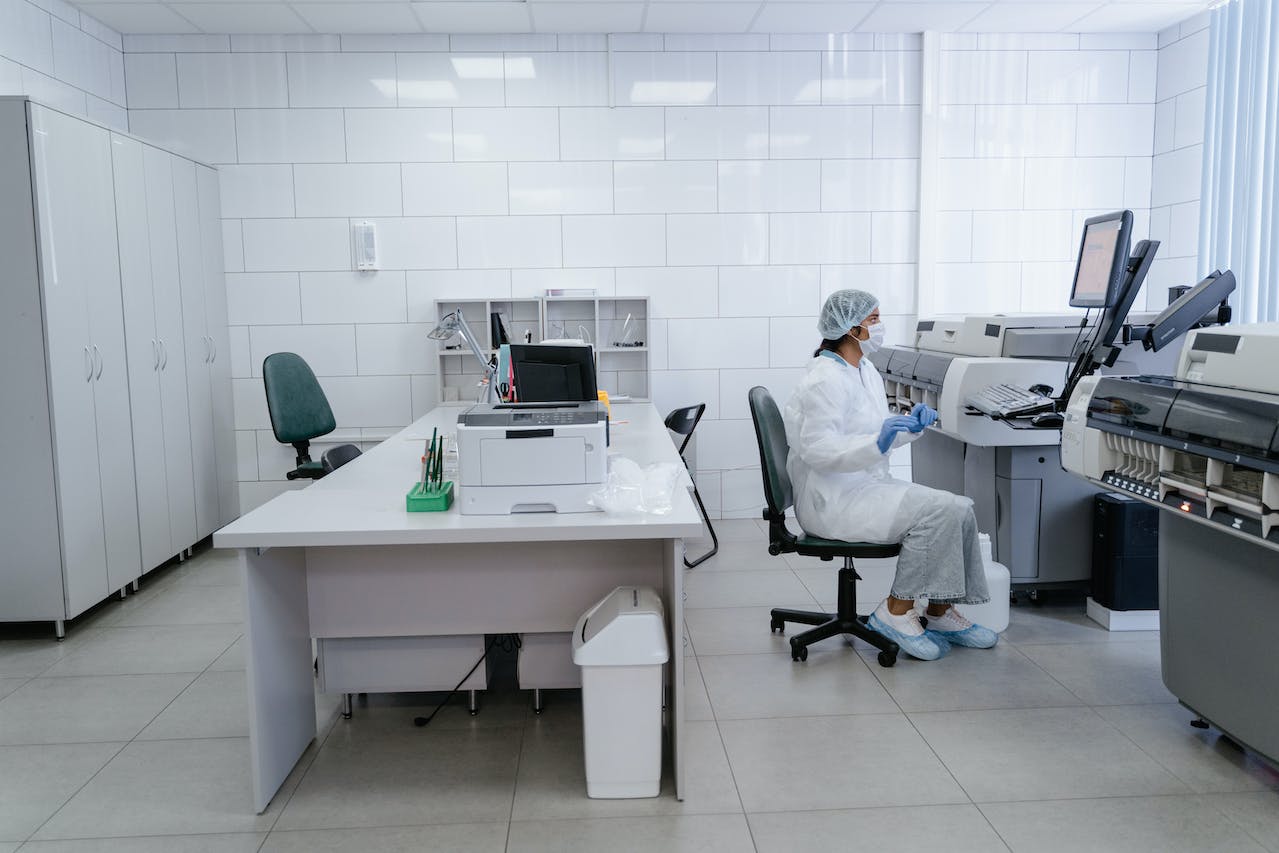
Why Is Ergonomics Important in the Lab
In the intricate and precise world of laboratory work, the need for an environment that supports both safety and efficiency is paramount. Ergonomics plays a vital role in achieving this balance. Far from being a mere luxury, ergonomic considerations in lab settings are essential for ensuring the safety, comfort, and efficiency of those who operate within these spaces. Delving into the critical role of ergonomic design, this article explores how it significantly contributes to the well-being of lab workers, the potential risks of ignoring its principles, and the ways in which it can enhance productivity and efficiency. By embracing and implementing ergonomic solutions, laboratories can become spaces that not only facilitate scientific innovation but also uphold the health and safety of the individuals driving these advancements.
Related Link: 7 Things You Need for an Ergonomically Correct Workstation
What Is the Significance of Ergonomic Design in a Laboratory Setting?
The significance of ergonomic design in laboratory settings cannot be overstated. Ergonomics, or the practice of designing the lab environment to meet the users’ needs, plays a critical role in safeguarding the health and well-being of lab workers. In the lab, where tasks include high forces, repetitive actions, and those requiring awkward postures, the right ergonomic design can prevent a host of work-related discomfort, including repetitive strain injury, back pain, and neck pain. Moreover, the unique challenges of each laboratory—considering its seating, reach distances, lighting, equipment, and the diverse needs of its staff—demand a tailored ergonomic approach.
An ergonomic assessment of a laboratory should address multiple interactive factors. These include the nature of tasks (whether repetitive or requiring significant effort), the physical attributes of the users (such as height and build), location of the objects and machines, and any special requirements they might have. Evaluating the suitability of equipment and furniture, such as the supportiveness of chairs and the correct height for machines, is also essential. Ergonomic improvements might involve simple changes in layout or the introduction of more suitable equipment, leading to significant enhancements in the lab’s overall functionality.
Eager to enhance safety and efficiency in your lab with ergonomics? Contact ErgoFit Consulting for specialized solutions and expert advice.
How Does Ergonomic Equipment and Furniture Contribute to the Well-Being of Lab Workers?
Ergonomic furniture is pivotal in promoting the well-being of lab workers. The design of biosafety cabinets, fume hoods, , chairs, and equipment that aligns with the user’s build and height can drastically reduce physical strain. Properly designed ergonomic work areas ensure that lab workers do not have to endure awkward postures, thereby reducing the risk of musculoskeletal disorders. Supportive and good adjustable seating plus adjustable work surfaces also contribute to better posture and reduced strain on the back and neck.
Moreover, ergonomic lab designs consider factors such as the arrangement of equipment and supplies for ease of access, and the positioning of computer monitors. This attention to detail in the ergonomic design not only caters to the physical well-being of lab workers but also enhances their mental health. A comfortable and thoughtfully arranged workspace reduces stress and improves focus, thereby positively impacting overall job satisfaction and mental well-being.
Related Link: Ways for EH&S to Address Sitting Disease
What Are the Potential Risks of Ignoring Ergonomic Principles in a Laboratory Environment?
Neglecting ergonomics in laboratory settings can result in a variety of risks, especially concerning the health and safety of those working in labs. When ergonomic practices are not applied, there is an elevated possibility of lab personnel developing musculoskeletal issues. These issues often stem from forceful exertions, awkward postures, long periods of standing, or sitting in positions that are not ergonomically sound. Such health complications can have lasting effects, leading to frequent absences, a decline in work efficiency, and even career-ending injuries – yes, it’s true; but we’ve saved many people who were on the brink of medically retiring!
Additionally, an environment that lacks ergonomic optimization can cause increased fatigue for lab workers. This can adversely affect their focus and accuracy in performing lab tasks. The resultant drop in work quality and heightened probability of mistakes and mishaps in the lab are critical concerns. In lab environments, where precision and meticulous attention are crucial, such errors can have substantial consequences, potentially impacting the outcomes of research and the safety of the laboratory staff.
How Can Proper Ergonomics Enhance Productivity and Efficiency in a Lab?
Proper ergonomic design in a lab setting can significantly enhance productivity and efficiency. Ergonomically designed workspaces allow lab workers to perform tasks more comfortably and efficiently, reducing the time spent adjusting equipment or recovering from strain and fatigue. When workers are comfortable and their workstations are tailored to their needs, they can focus better and maintain a higher level of accuracy in their work. This leads to a more streamlined workflow and higher output of quality work.
Additionally, ergonomic improvements often involve better organization of tools and materials, leading to easier access and reduced time wastage. By minimizing physical discomfort and creating an optimal working environment, ergonomics plays a direct role in improving the overall productivity of lab workers, allowing them to complete their tasks more effectively and with greater satisfaction.
Are There Specific Ergonomic Guidelines for Different Types of Lab Work?
Different types of lab work require specific ergonomic guidelines to address the unique challenges they present. For instance, labs that involve extensive use of microscopes need workstations that reduce neck and eye strain, while labs dealing with heavy equipment require designs that minimize the risk of injury when moving or lifting these items. Ergonomic guidelines must be flexible and adaptable to cater to the diverse range of activities performed in various laboratory settings.
In addition to task-specific ergonomics, there is a need for general ergonomic principles that apply to all lab environments. These include adjustable workstations to cater to different heights and builds of workers, proper lighting to reduce eye strain, and ergonomic seating that supports the back and encourages safe postures. Tailoring these guidelines to the specific needs of each lab ensures that all workers, regardless of the nature of their work, can benefit from a safe and comfortable work environment.
How Can Ergofit Consulting Help
At Ergofit Consulting, we understand the unique ergonomic challenges faced in laboratory settings. Our approach is to first conduct a thorough assessment of your laboratory to identify specific ergonomic needs. This includes evaluating the tasks performed, the equipment used, various processes, constraints, and the general physical attributes of your staff. We can then provide specifications (e.g. dimensions, heights). We recognize that every laboratory is different, and our goal is to provide personalized solutions that enhance both safety and efficiency.
Our services range from recommending ergonomic furniture and equipment to redesigning workspaces for optimal functionality. We also offer training programs to educate lab workers on the best ergonomic practices, ensuring they understand how to use their workspace and equipment safely and efficiently. Our commitment is to create a laboratory environment that not only prioritizes the well-being of your staff but also contributes to improved productivity and the overall success of your research endeavors. With Ergofit Consulting, you can transform your lab into a model of ergonomic excellence.
Discover how ergonomics can revolutionize your laboratory environment – reach out to ErgoFit Consulting for a consultation today.
Ergonomics – A Keystone for Laboratory Excellence
Incorporating ergonomic practices into lab environments is essential for the health of laboratory personnel and the effectiveness of scientific activities. Ergonomics is more than just about comfort; it involves establishing an environment that minimizes injury risks, boosts productivity, and fosters a culture of safety and effectiveness. As lab spaces develop, focusing on ergonomic design is vital. This approach ensures that these areas not only propel scientific exploration forward but also protect the health and welfare of the individuals involved in these significant developments. With expert guidance, such as that provided by Ergofit Consulting, laboratories can effectively adopt ergonomic practices, setting a new standard for laboratory work environments.
Related Link: Office Ergonomics And How It Affects Your Health
